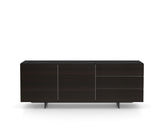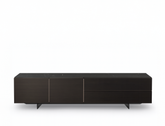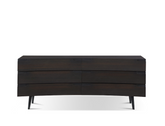Pet-Friendly HDB Design Tips

With the growing trend of pet-friendly interior design in HDB flats, creating a space that accommodates both your lifestyle and your furry friends has never been more achievable. A harmonious, functional home can be tailored to meet the needs of all its inhabitants, ensuring that everyone—both humans and pets—can live comfortably together.
In this comprehensive guide, we will explore essential tips and strategies for designing a pet-friendly HDB interior. From selecting durable flooring to seamlessly integrating pet amenities into your home renovation plans, these insights will help you transform your HDB flat into a pet-friendly oasis that’s both stylish and practical, catering specifically to the unique needs of Singaporean pet owners and their beloved companions.
Key Tips for Pet-Friendly HDB Interior Design
Home Renovation Strategies for a Pet-Friendly Space
Understanding Your Pet’s Needs and Preferences
-
Size and Breed Considerations: When designing a pet-friendly space, it's crucial to consider your pet’s size and breed. Larger pets, such as big dogs, require ample room to move around comfortably, while smaller animals like cats and rabbits may be content with more confined spaces. Researching your pet's breed can provide valuable insights into their instincts and tendencies, helping you create a living space that truly meets their needs.
-
Age and Mobility: Your pet's age and mobility should play a significant role in your design decisions. Senior pets or those with mobility issues may benefit from special accommodations like ramps or non-slip flooring to make their environment safer and easier to navigate.
-
Activity Levels: Some pets are highly energetic and need space for exercise and play, while others might be more laid-back. Ensure your interior design provides enough room for your pet to stay active, engaged, and healthy.
-
Sleeping Preferences: Observe your pet’s sleeping habits to determine their preferred sleeping spots. Some pets love to curl up in cosy nooks, while others prefer more open spaces. Designing a dedicated sleeping area that caters to their preferences will enhance their comfort and overall well-being.
-
Feeding and Grooming Areas: Consider your pet’s feeding and grooming routines when planning your interior design. Allocating specific areas for these activities, complete with easy-to-clean surfaces and adequate storage for supplies, will make maintaining your pet's hygiene and nutrition more manageable.
-
Safety Concerns: Pets are naturally curious and can get into trouble if left unsupervised. Identify potential hazards in your HDB flat, such as exposed wires or fragile items, and design your space to minimize risks, ensuring a safer environment for your pets.
Flooring Solutions for a Pet-Friendly Home
Choosing the right flooring is a critical aspect of creating a pet-friendly home. The flooring should be durable, easy to clean, and comfortable for your pets. Here are some top flooring options:
-
Vinyl Flooring: Vinyl is a highly durable, water-resistant option that’s perfect for pet owners. It’s comfortable for pets to walk on, reduces noise, and is available in various styles and designs. Additionally, vinyl flooring is relatively affordable, making it a cost-effective choice for home renovations.
-
Laminate Flooring: Laminate flooring is another popular choice for pet-friendly homes due to its resistance to scratches, stains, and water damage. This low-maintenance option comes in a range of styles, including wood and stone finishes. However, it’s important to choose a textured or matte finish to provide better traction for your pets, as laminate can be slippery.
-
Bamboo Flooring: Bamboo is an eco-friendly, sustainable option that offers excellent durability and scratch resistance. It’s comfortable underfoot for pets and can withstand heavy foot traffic. However, bamboo can be susceptible to water damage, so it’s essential to clean spills promptly and avoid excessive moisture.
-
Cork Flooring: Cork is another environmentally friendly choice that provides a soft and comfortable surface for pets. It offers excellent insulation and noise reduction, which is particularly beneficial for apartment living. While cork is naturally resistant to scratches and stains, it does require proper sealing and maintenance to prevent water damage.
-
Ceramic or Porcelain Tiles: Tiles are durable, water-resistant, and easy to clean, making them a practical option for pet-friendly homes. However, they can be cold and hard underfoot, which might be uncomfortable for pets, especially those with joint issues. To create a warmer, more comfortable surface, consider using area rugs or pet beds in areas where your pets spend most of their time.
-
Carpeting: While carpeting offers warmth and comfort, it’s generally not the best choice for pet owners due to its susceptibility to stains, odors, and damage from pet nails. If you prefer carpeting, opt for low-pile, stain-resistant varieties, and use area rugs or pet mats in high-traffic areas for easier cleaning and maintenance.
Selecting Pet-Friendly Furniture and Fabrics
The furniture and fabrics you choose can significantly impact the durability and appearance of your pet-friendly home. Here are some tips for selecting the right materials:
-
Durable Furniture Materials: Opt for furniture made from solid wood, metal, or high-quality engineered wood. These materials are durable and less prone to damage from scratches or chewing, ensuring your furniture remains in good condition even with pets in the home.
-
Removable and Washable Covers: Accidents are inevitable when you have pets, so choose furniture with removable and washable covers for easy cleaning. This feature is particularly important for sofas, armchairs, and pet beds, where spills and pet hair are common.
-
Pet-Friendly Fabrics: When selecting fabrics, prioritize those that are durable and easy to clean. Some great options include:
- Leather or Faux Leather: These materials are easy to clean, resistant to scratches and stains, and add a sophisticated touch to your home’s décor.
- Microfiber: This synthetic fabric is soft, comfortable, and highly resistant to stains and odors. It’s also easy to maintain, making it a popular choice among pet owners.
- Canvas or Denim: These heavy-duty, tightly woven fabrics are durable and can withstand pet scratching and chewing.
-
Avoid Delicate Fabrics: Steer clear of delicate materials like silk, velvet, or chenille, which are more prone to damage and difficult to clean. These fabrics are also less resistant to pet hair, scratches, and stains.
-
Camouflage Pet Hair: If your pets shed a lot, consider choosing fabrics with patterns or colors that help hide pet hair. This can keep your home looking clean and well-maintained between cleanings.
-
Protective Covers and Throws: To safeguard your furniture from pet hair, scratches, and stains, use protective covers or throws. These removable items can be washed regularly and provide a comfortable surface for your pets to lounge on.
-
Furniture with Raised Legs: Choosing furniture with raised legs makes cleaning underneath easier and helps keep your home free from pet hair, dust, and dirt.
Final Thoughts: Designing a Pet-Friendly HDB Interior
Creating a pet-friendly HDB interior that accommodates both your needs and those of your pets is not only achievable but can significantly enhance your quality of life. By carefully assessing your pet's needs, selecting the right flooring, furniture, and fabrics, and designing safe, accessible spaces, you can create a harmonious living environment that everyone in your home will enjoy.
Frequently Asked Questions (FAQ)
What type of flooring is best for a pet-friendly home?
Vinyl flooring is often recommended for pet-friendly homes due to its durability, water resistance, and ease of maintenance. It provides a comfortable surface for pets and is available in a variety of styles and designs. Other good options include laminate, bamboo, cork, and ceramic or porcelain tiles.
How can I protect my furniture from pet damage?
To protect your furniture from pet damage, choose durable materials like solid wood or metal, use furniture with removable and washable covers, and opt for pet-friendly fabrics like leather, microfiber, or canvas. Additionally, using protective covers or throws can help safeguard your furniture from scratches, stains, and pet hair.
What are some pet-friendly fabric options for furniture?
Some pet-friendly fabric options include leather or faux leather, which are easy to clean and durable; microfiber, which is soft and resistant to stains and odors; and canvas or denim, which are heavy-duty and tightly woven, making them ideal for homes with pets.
How can I make my home safer for my pets?
To make your home safer for pets, identify and minimize potential hazards such as exposed wires, sharp edges, and breakable items. Ensure that your flooring provides good traction to prevent slips and falls, especially for older pets. Additionally, consider your pet’s size, breed, and activity level when planning your interior design to create a comfortable and safe environment for them.
Should I avoid carpeting in a pet-friendly home?
Carpeting is generally not recommended for pet-friendly homes due to its tendency to trap stains, odors, and pet hair. However, if you prefer carpeting, opt for low-pile, stain-resistant varieties and use area rugs or pet mats in high-traffic areas for easier cleaning and maintenance.
Designing a pet-friendly HDB interior is about creating a space where both you and your pets can live comfortably and happily. With thoughtful planning and the right choices, your home can be a stylish, functional, and safe haven for everyone.
- Affordable Furniture
- Cat Friendly Sofa
- Child-Friendly Sofa
- Contemporary Sofa
- Customised Sofa
- Durable Furniture
- Fabric Sofa
- Furniture Singapore
- Furniture Store
- L-Shape Sofa
- Leather Furniture
- Leather Upholstery
- Online Furniture Shop
- Pet Friendly Sofa
- Quality Furniture
- Removable Sofa Covers
- Sectional Sofa
- Sofa
- Solid Wood Furniture
- Velvet Sofa
- Water Repellent Sofa







